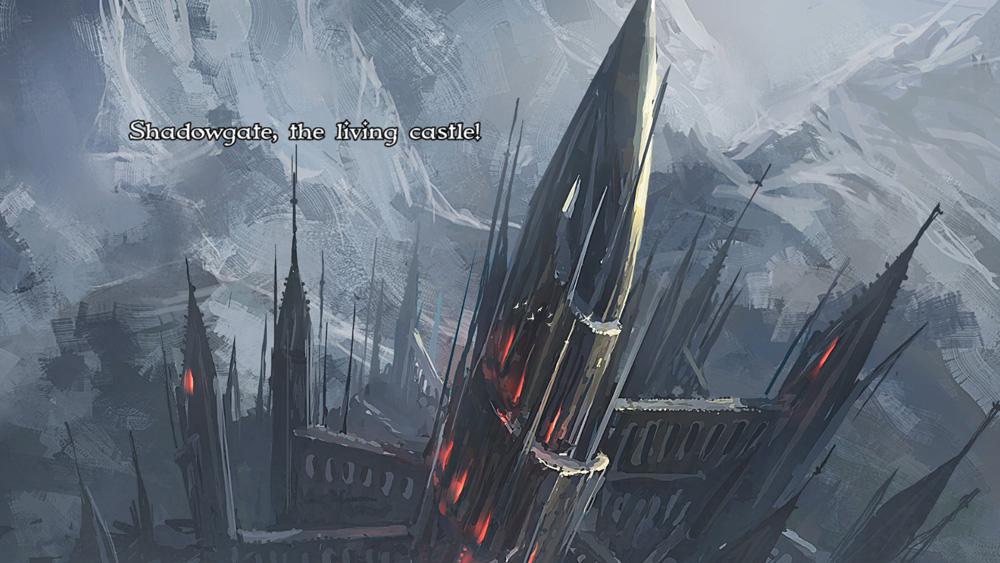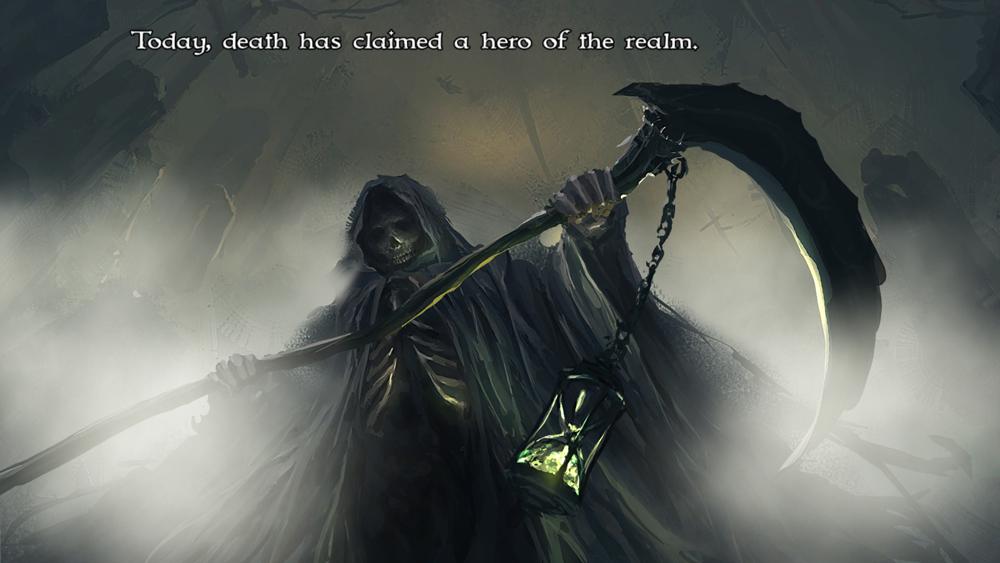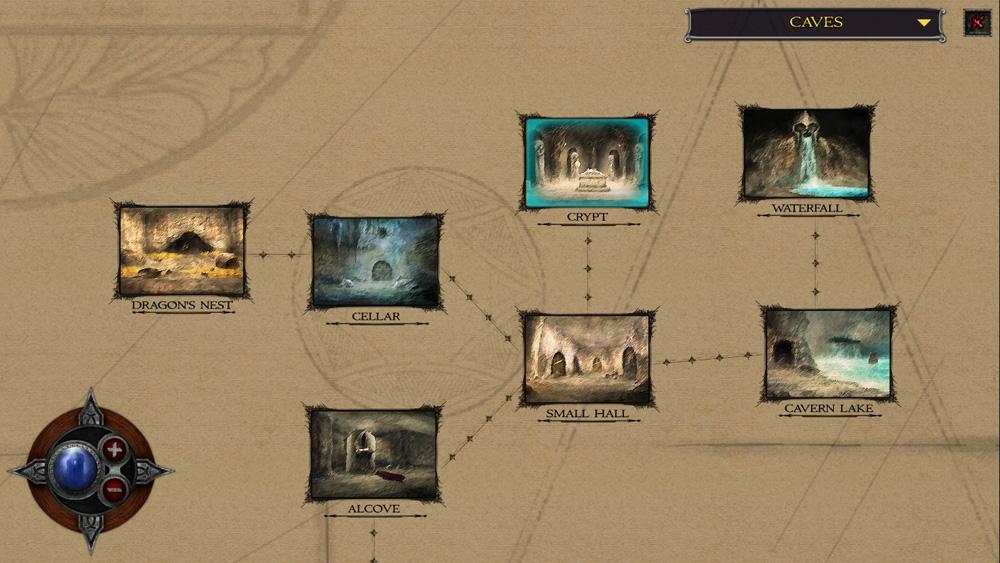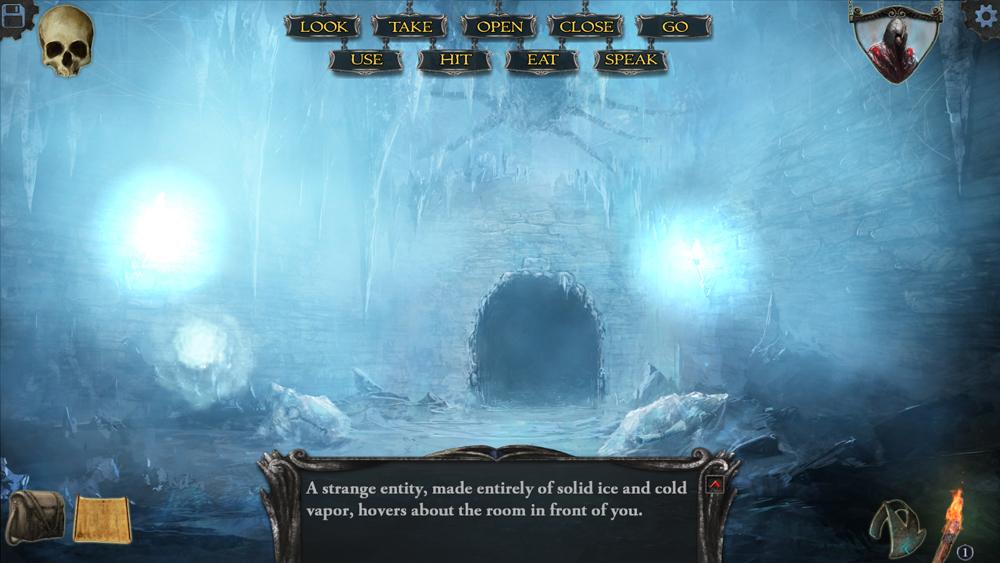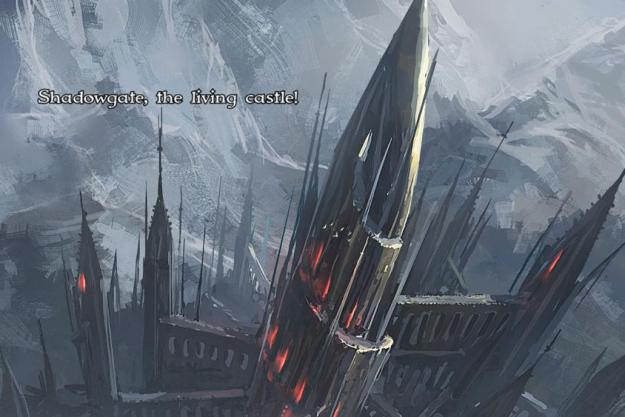
“Shadowgate is a loving recreation of a seminal point-and-click adventure, with a few modern touches tacked onto a thoroughly 1987 chassis.”
- Classic, point-and-click puzzle solving
- Lovingly nostalgic revival by the original creators
- Punishing, retro difficulty
- Sticks to obtuse, 1987 interface in lieu of subsequent innovations
- Occasionally muddy visuals make vital objects easy to miss
Nostalgia plays an interesting and prominent role in the video game industry. Although the medium is only a few decades old, it is already obsessively reflexive, continually mining its own past rather than forging ahead into the vast, untapped formal wilderness. Doom, Tomb Raider, countless Mario iterations—at times it seems that the majority of new releases are derived from previous titles.
Kickstarter has only stoked the flames of reminiscence, allowing publishers to safely develop targeted revivals of games that have the strongest fan-bases. Among these is Shadowgate, a classic, point-and-click fantasy adventure originally released by ICOM Simulations for Macintosh computers in 1987 and subsequently ported to all of the contemporary platforms of the time. A remake of the same name was Kickstarted in 2012 by original creators Dave Marsh and Karl Roelofs with their new, independent studio Zojoi, founded for the explicit purpose of revitalizing their old IP.
Shadowgate remains obsessively true to its original system, for better and for worse.
Shadowgate‘s story is fantasy boilerplate: you are Jair, a young soldier who has been summoned in dreams by the wizard Lakmir to fulfill your destiny and defeat the evil warlock Talimar. To do so you must venture into Shadowgate, the living castle of legend. The plot plays out through the occasional cutscene wherein the spirit of Lakmir guides you along in the right direction or the glowing, red eyes of Talimar taunt you, but the narrative largely serves as a loose framework for classic, point-and-click exploration and puzzle solving.
While many of the crowdfunded revivals have taken their original concepts and filtered them through subsequent mechanical and interface innovations, Shadowgate remains obsessively true to its original system, for better and for worse. Each room is viewed from a single, first-person perspective. A list of verbs across the top of the screen (use, look, go, take, hit, etc.) provides a syntax for how you can interact with the world.
If you’ve ever played an adventure game from the era, you know exactly how it goes: take key; open inventory; use key (close inventory) on door; open door, etc. The process can be streamlined with configurable hotkeys, but it nevertheless feels unnecessarily obtuse. For instance, because use requires both a subject and an object, the intuitive “use lever” will prompt “use the lever on what?” Instead you need to use yourself on the lever.
Although the system of verbs does allow for an interesting and long-neglected approach to puzzle-solving, the complete lack of any sort of contextual cues (when I select a door, I probably want to open it; when I select a lever, I probably want to pull it) defiantly ignores innovations that had enhanced the genre even by the early ’90s. What updates there are to the game’s core systems are largely cosmetic, such as the ability to hide the UI and the requisite addition of achievements. Mechanically, Shadowgate’s feet are firmly planted in 1987.
The puzzles themselves are quite challenging. Fans of the original will recall that castle Shadowgate is an unforgiving place, with myriad ways to die lurking around every corner; they will not be disappointed by the remake. In my first hour of playing I fell to my death in two separate places, was burnt to a crisp by a dragon’s breath, brained by a goblin’s club, and pulled to a watery grave by a kraken’s tentacle. Each time I was met by the Grim Reaper who mocked my foolishness before shuttling me back to the main menu for another go.
Fans of the original will recall that castle Shadowgate is an unforgiving place, with myriad ways to die lurking around every corner; they will not be disappointed by the remake.
You can take as much time as you would like to consider your next move, but each action moves the clock forward by a single tick, bringing you one step closer to losing from an extinguished torch or succumbing to an early-acquired banshee’s curse, which forced me to start over at least twice and move more efficiently before I managed to find a cure. The economy of actions dictated by the fixed number of torches that you can find in the castle gives the game a sense of urgency and momentum in contrast to the dreamlike malaise that could set in while aimlessly wandering around the islands of Myst.
Fans will recognize some puzzles and rooms from the original, but the developers have taken pains to re-imagine them and add entirely new puzzles as well, guaranteeing a trying experience for veterans and newcomers alike. Your companion, a talking skull cheekily named Yorick, offers the occasional hint when prompted, but in the spirit of its retro challenge, Shadowgate has admirably little hand-holding.
Visually the game utilizes hand-painted, animated concept art. While frequently quite lovely, it does at times create the problem of muddying the distinction between objects with which you can interact and background details. When (frequently) at a loss, I would find myself freely clicking all over the screen in case I had missed any points of interaction.
The developers of Shadowgate are bullishly committed to their original vision. As is so often the case with Kickstarted games, its audience is mostly self-selecting. If you want a return to the living castle of your youth, then Shadowgate delivers on its promise with loving detail and a fresh coat of paint. Without the rose-tinted lenses of nostalgia, however, this slightly stale offering will largely serve as an object lesson in how far we have come in interaction design.
Highs
- Classic, point-and-click puzzle solving
- Lovingly nostalgic revival by the original creators
- Punishing, retro difficulty
Lows
- Sticks to obtuse, 1987 interface in lieu of subsequent innovations
- Occasionally muddy visuals make vital objects easy to miss
